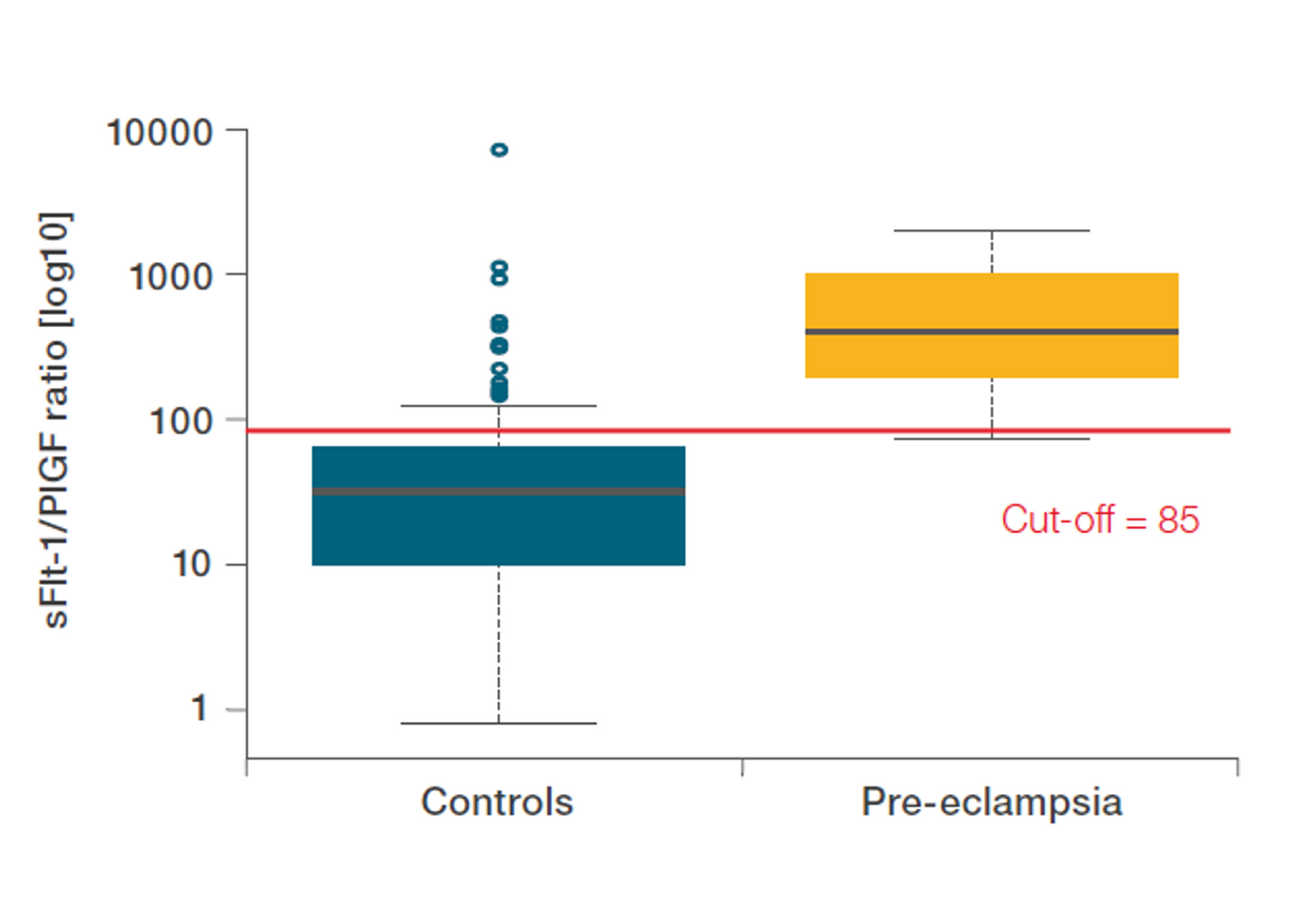How to effectively manage Pre-eclampsia during whole pregnancy?

Although the cause of pre-eclampsia remains unclear, an imbalance of the angiogenic factors Placental Growth Factor (PlGF) and soluble FMS-like Tyrosine Kinase (sFlt-1) seems to induce endothelium dysfunction and therefore may initiate the disease.
Pre-eclampsia can be classified as early-onset pre-eclampsia2 (clinical onset of disease <34 weeks of gestation; Rapid progression, multiple complications), or as late-onset pre-eclampsia2 (clinical onset of disease >37 weeks of gestation; Impact on fetus less severe).
Regarding the early-onset pre-eclampsia, it is nowadays possible to predict it and take the necessary measures to reduce its incidence.
Results from the ASPRE Study3,4 showed that women at risk to develop the disease may benefit from low-dose aspirin (75-150 mg/day) intake. If prevention with aspirin starts prior to the 16th week of gestation, incidence of pre-eclampsia may be reduced by 50-90%.
To identify women at risk, first trimester pre-eclampsia screening must be performed, using a combination of maternal risk factors, multiple biophysical and biochemical measurements.

Risk assessment for fetal trisomies and maternal pre-eclampsia can be performed at the same time, using the same blood draw.
What about women who could not benefit from a pre-eclampsia screening at first trimester of pregnancy?
Here, making a clear diagnosis is key. Later on in pregnancy, 10% of pregnant women show unspecific signs and symptoms of pre-eclampsia and only one fifth of them is actually developing pre-eclampsia6.As assessment of blood pressure and proteinuria alone offer a poor sensitivity and specificity in predicting pre-eclampsia7, 8, the diagnostic standard can significantly improve by adding sFlt-1 and PlGF serum measurement.
Indeed, as separation of curves of healthy vs pre-eclamptic pregnancy is already showing from week 8, PlGF is a perfect biomarker for first trimester pre-eclampsia screening as well as pre-eclampsia diagnosis >20 weeks. Differences in sFlt-1 levels are starting to show after week 20, which makes sFlt-1 the perfect partner for PlGF in the diagnosis of pre-eclampsia > week 20.


Check out what experts say in this respect HERE and ask your questions HERE.
References:
- The World Health Report 2005; p62
- Akolekar R et al. Prenat Diagn 2011; 31: 66-74
- Bujold E et al. J Obstet Gynaecol 2010; 116: 402-14
- Park et al. Ultrasound Obstet Gynecol 2015; 46(4): 419-23
- Poon LCY et al. Hypertension 2009; 53: 812-818
- Milne et al. BMJ 2009; 339: b3129
- Verlohren et al.Clin Sci 2012; 122(2): 43-52
- Zhang et al. Obstet Gyneol 2001; 97: 261-7
- Verlohren et al. Am J Obstet Gynecol 2010; 202: 161.e1-11
- Rana et al. Circulation 2012; 125 (7): 911-9
- Salahuddin et al. Hypert Pregn 2016; 35(3): 330-45








